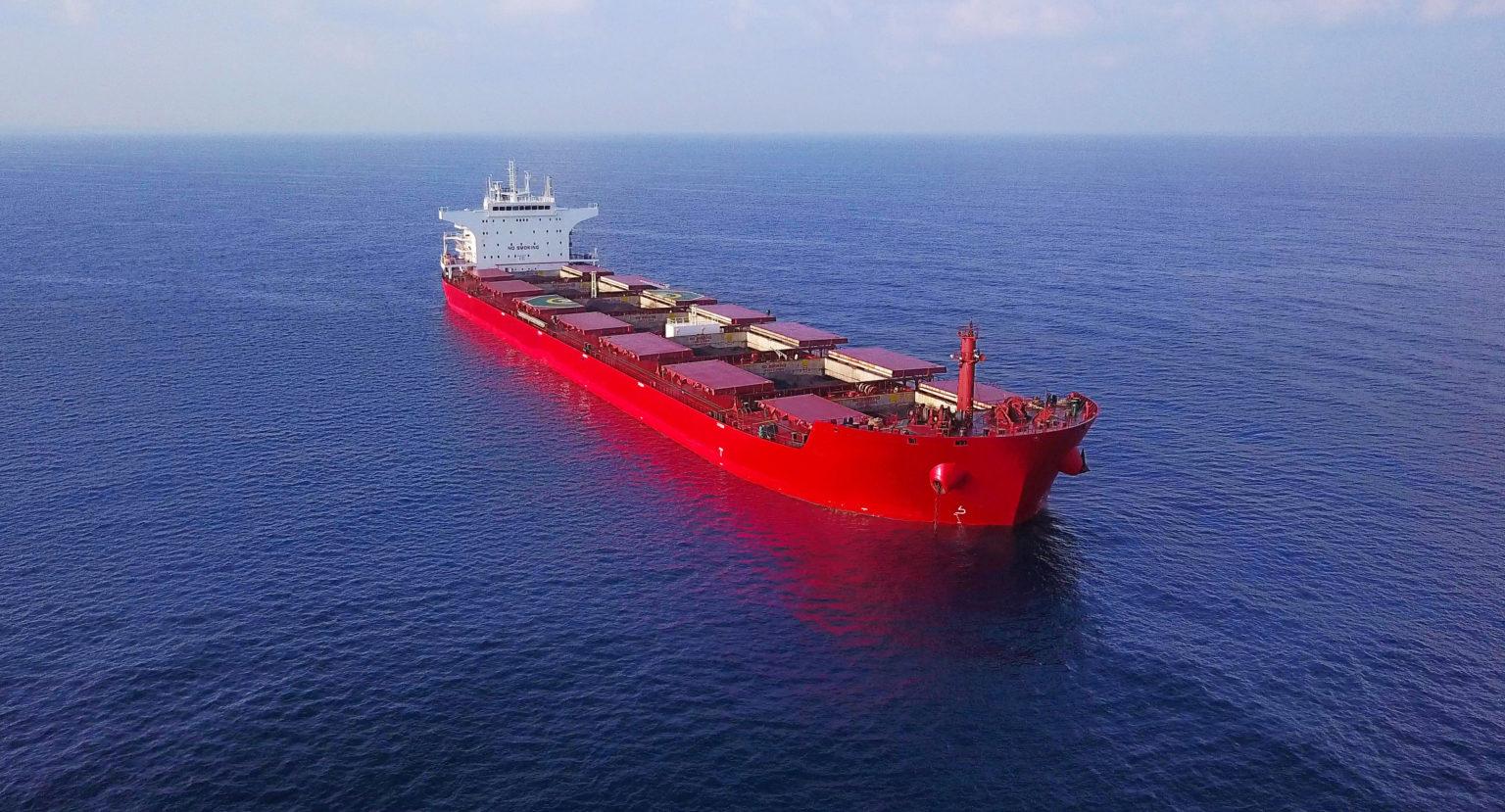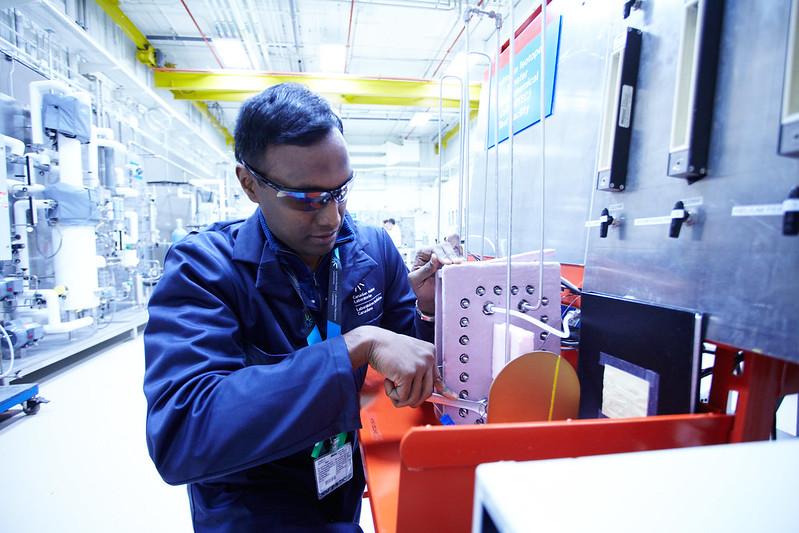
A huge increase in worldwide R&D is required to scale up zero-carbon technologies for the marine sector.
Decarbonization is arguably the biggest challenge facing marine transportation. The International Maritime Organization (IMO) has called upon ship owners to reduce their global CO2 emissions by at least 40% by 2030 (compared to 2008 levels), and half by 2050. All greenhouse gas (GHG) emissions must be eliminated soon after.
Individual countries are setting even more ambitious targets. Canada is considering setting a national target for net zero emissions by 2050 and would join several other nations in doing so. The maritime industry is undertaking this decarbonization challenge, estimated to cost upwards of US$1 trillion, but while there’s will, it still needs ways. Simply put, the technologies required currently do not exist at the scale modern ships need.

The ICS issued a blunt November 2020 report about the scale of this venture. Catalyzing the Fourth Propulsion Revolution emphasizes the need for global fleets to be modernized and new energy supply networks established. The report warns that the required zero-carbon technologies can only come about in time with a huge increase in worldwide R&D.
Ship would need 10,000 Tesla S85 batteries daily
Although steadily advancing, none of the possible technologies has yet overcome the difficulties that it poses for maritime use. Hydrogen and ammonia are less energy dense than diesel, which means ships would need up to five times the volume.
If current ammonia volumes were tripled to achieve the amount required, maritime transport would consume 60% of the world’s current renewable energy production to obtain this cleaner fuel.
Battery power likewise poses a challenge at present with a typical container vessel needing the power of 10,000 Tesla S85 batteries daily. As for hydrogen, under current industry technologies, it is produced during petroleum refining, while ammonia is made from natural gas.
Ship owners support establishing $5 billon R&D fund
Members of the Chamber of Marine Commerce have joined global ship owners in supporting the establishment of a US$5-billion fund dedicated to identifying one or more technical approaches to introduce zero-carbon vessels across the sector by 2030. They want to raise the funds by having the IMO oversee a global levy on marine fuels.
The ICS report warns that a failure by governments to promptly support the initiative to both spur and de-risk R&D could result in trillions of misspent investment dollars and the sector failing to decarbonize in time. “Even using conservative estimates for trade growth, a 50% total cut in C02 by 2050 can only be achieved by improving carbon efficiency of the world fleet by around 90%,” the report states. “This will only be possible if a large proportion of the fleet is using commercially viable zero-carbon fuels.”
Canada’s hydrogen advantages
The fund would further research and optimize already identified zero-emission options, such as hydrogen. Already among the world’s top 10 hydrogen producers, Canada is now actively pursuing a strategy to become a leading producer, user and exporter, while also using it to help achieve the country’s 2050 net-zero goal.
Canada’s advantages include ample feedstock (as biomass for production energy), a strong energy sector, and geographic assets that include water proximity and supply. Approximately 10 kilograms of water is required for every kilogram of hydrogen. While the water’s purity is essential, research is already underway to use sea water by having it first go through a purification.
“When hydrogen is produced through electrolysis, which involves running electricity through purified water to split the hydrogen and oxygen atoms, clean oxygen is immediately released into the air and the spent hydrogen becomes a vapor that ultimately reverts to water,” explains Nirmal Gnanapragasam, the senior process/ modeling scientist at the Hydrogen Technologies Branch of Canadian Nuclear Laboratories (CNL) Ltd.

Nirmal Gnanapragasam, the senior process/ modeling scientist at the Hydrogen Technologies Branch of Canadian Nuclear Laboratories (CNL) Ltd.
Transport Canada has awarded CNL a contract to assess the realities of using hydrogen as a marine fuel to achieve IMO targets. CNL is researching hydrogen’s advantages, challenges, practicalities and logistics, including the lifecycle of this energy’s production and use with, for example, liquid natural case.
“In addition to zero GHG, hydrogen offers an opportunity to eliminate particulate matter from ships,” notes Gordon Burton, CNL’s hydrogen program manager.
CNL is also exploring some technologies that would enable feasible emissions-free hydrogen production. Some of the major challenges relate to the energy required to make hydrogen, establishing ample supply, as well as how to store a fuel that needs at least triple diesel’s space.
“It could be ships will have to do two bunkering stops instead of one,” Gnanapragasam says. CNL is developing a tool to provide these answers on a fleet basis.
“If we know the power required by a fleet of navy, coast guard, or ferry vessels, or a fleet’s ships by classification, we can determine whether obtaining the necessary energy to make and supply the required hydrogen is a sustainable proposition,” Gnanapragasam explains. Various options are being studied in terms of onboard fuel storage with vessel designers and operators helping to identify every possible space unoccupied by diesel.
Storing hydrogen gas as a pumpable liquid would provide a better mass/ volume ratio. “Another option is to turn the hydrogen into ammonia that could be used directly or converted back to hydrogen depending on engine requirements,” Gnanapragasam adds.
Energy source hurdles
Huge among the considerations is the energy required to ‘split’ water into hydrogen and oxygen.
“You can use all electricity, but this could put excessive demands on the grid as we move towards greater overall electrification,” Gnanapragasam says. “So, we can also use a combination of electricity and heat that involves burning a biomass.”
CNL is also investigating the possible use of a small-scale landside nuclear reactor as a production energy source. Having the hydrogen readily supplied by all ports would reduce onboard storage issues.
“It’s a question of how to set up either a biomass gasification or a small nuclear reactor source of reliable energy to produce the necessary hydrogen to keep vessels supplied at the scale required,” Burton says.
The Université du Québec à Trois-Rivières already has a pilot project that uses biomass gasification to create hydrogen. A British Columbia company is looking at using forest waste to create hydrogen for export to Japan by tankers.